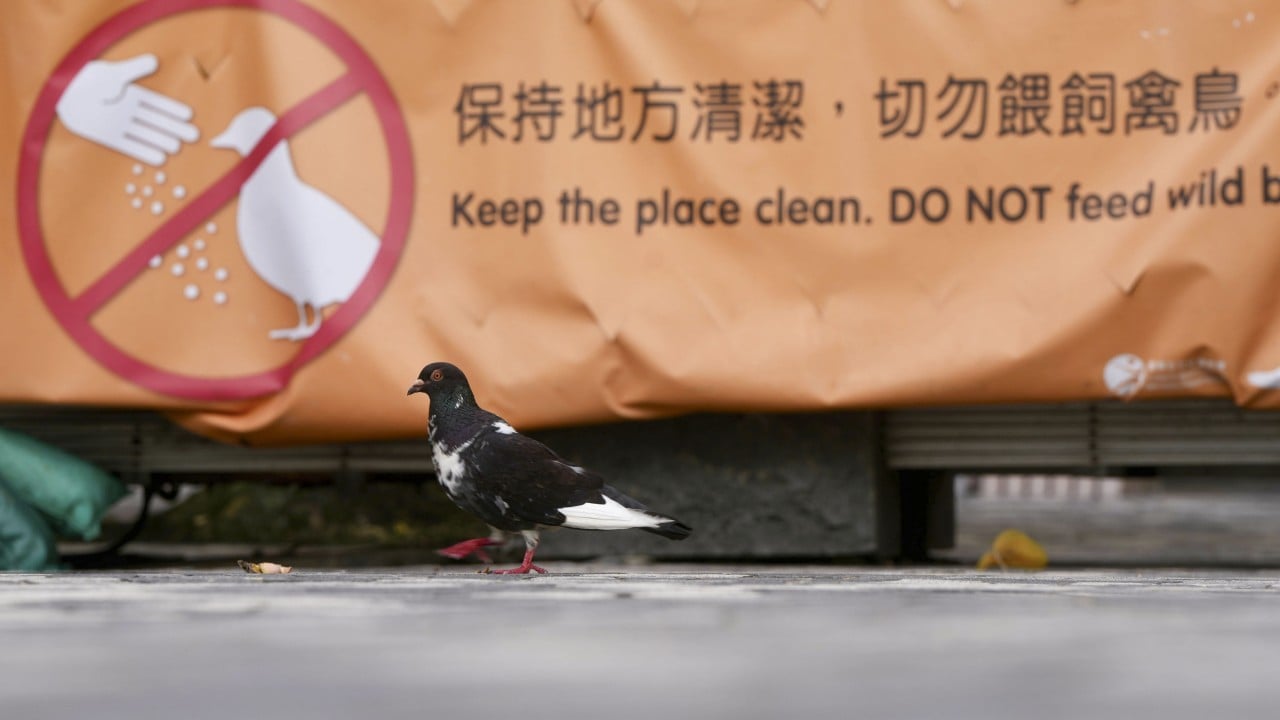Hong Kong recorded a notable decline in the number of pigeons gathered in hotspots amid a citywide ban on feeding wild animals that took effect on Thursday.
Four sites where pigeons frequently gathered showed only a scattered presence of them, with few to no droppings and traces of bird feed, such as rice and breadcrumbs, according to a morning check by the Post.
The areas surveyed were Lai Kok Estate in Sham Shui Po, Wah Fu and Wah Kwai estates in Pok Fu Lam, and South Horizons in Ap Lei Chau.
Only a handful of pigeons were spotted in the open spaces of these housing estates, including along roadside trees, on the roofs of footbridges and on MTR station exits.
Banners warning passers-by against feeding wild birds were displayed prominently in these neighbourhoods, reminding residents of the risks of contracting avian diseases and contamination of public areas.
But among the 32 residents the Post spoke to, only three said they were aware of the ban’s enactment.
Lai Kok Estate resident Elaine Choi, 49, said she “rarely” saw people feeding feral pigeons recently, and that those who did remained a “very small” fraction of the locals.
“The situation was not as severe as mentioned in media reports,” she said. “It has improved and the infestation was a bit overblown.”
An estate-wide clean-up campaign took place on June 14 and September 5 last year to heighten awareness of household and environmental cleanliness.
District councillor Raymond Lam Wai-man, of the Sham Shui Po East constituency, said people feeding feral pigeons had become rare, and expressed optimism the ban would eliminate the behaviour.
Lawmaker Stanley Li Sai-wing, of the New Territories South East geographical constituency, suggested that authorities introduce artificial intelligence to help identify offenders and collect evidence.
But it was still too early to tell if the ban was effective, another lawmaker said, adding that authorities should announce when law enforcement actions were taken to deter people from feeding the birds.
“The government must set an example and let the public know,” said Scott Leung Man-kwong of Kowloon West geographical constituency, a district considered to be the most infested by feral pigeons.
“So far I have not seen any significant improvement. Sometimes, you can see boxes of rice being left behind at MTR station exits.”
Hong Kong has 17 “black spots” where large gatherings of wild birds have raised environmental hygiene concerns, with Sham Shui Po being the most severe.
Some of the hotspots were in areas outside Olympian City Phase II and the Lai Kok and Fu Cheong public housing estates in Sham Shui Po, Leung added.
The government earlier gazetted amendments to the Wildlife Protection Ordinance, which extended the current no-feeding rules for wild animals to cover feral pigeons.
The maximum penalty for breaching rules was increased by 10 times to HK$100,000 (US$12,800) with the addition of one year in prison. A fixed penalty of HK$5,000 was also introduced.

Officers from the Food and Environmental Hygiene Department, the Housing Department and the Leisure and Cultural Services Department have been given new power to enforce the ban, along with the police force and the Agriculture, Fisheries and Conservation Department.
Previously, the Food and Environmental Hygiene Department only issued a fixed penalty ticket of HK$3,000 to people who left residual feed or food scraps on the ground.
The department said it had issued about 320 fixed penalty notices and carried out about 20 prosecution actions between July last year to June this year.
A spokesman added that the department had taken measures to improve environmental hygiene in certain public places where wild birds often gather.
They included dispatching personnel to inspect and take enforcement action against those who feed wild birds and cause pollution in public places, stepping up cleaning and using diluted bleach to disinfect relevant locations based on on-site conditions and needs, he said.


